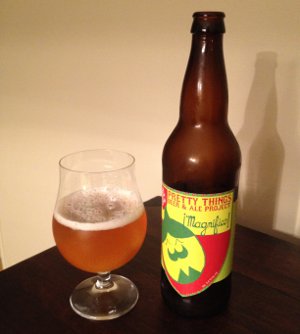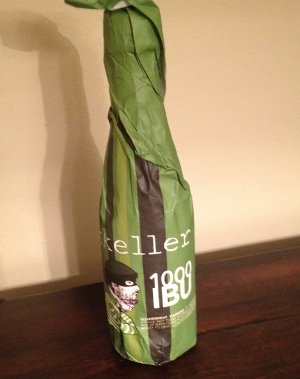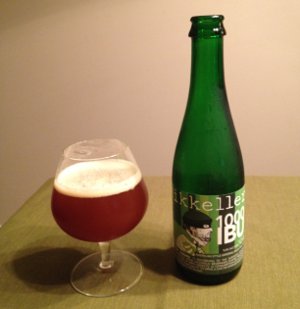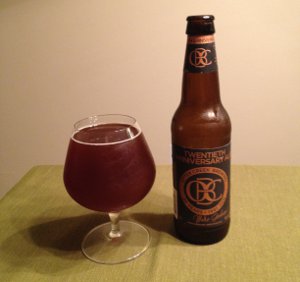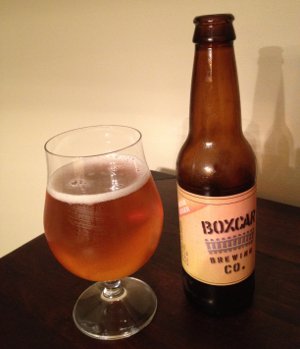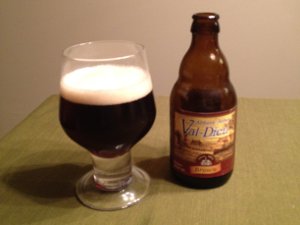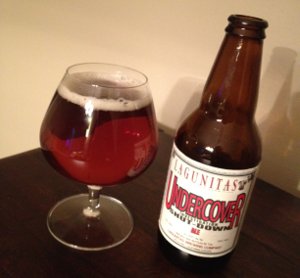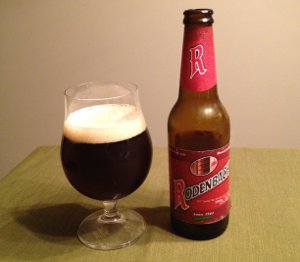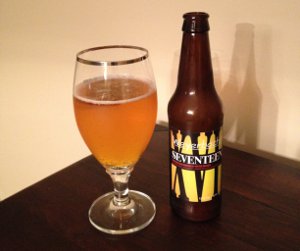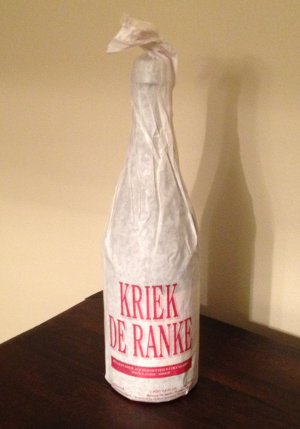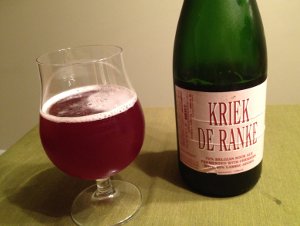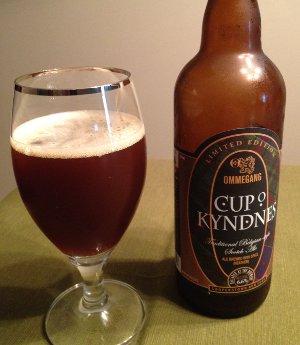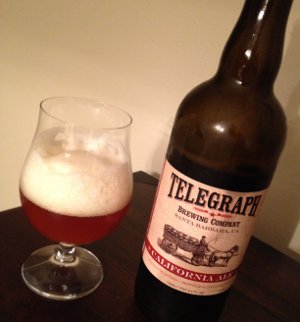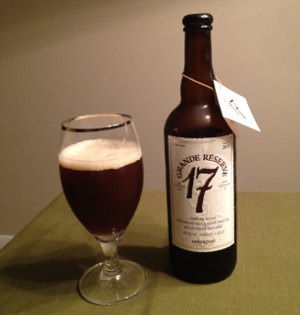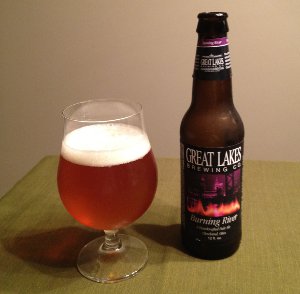There’s been a lot of talk in the beer dorkosphere lately about the secondary beer market. In particular, it seems that Ebay has finally started cracking down on folks who auction off rare beers for ungodly sums of money (the loophole sellers attempted to use was to say that these were “collectible bottles” that just happened to be unopened). Some brewers are overjoyed at this prospect (for reasons we’ll get into later), notably Hill Farmstead, Cantillon, and the brewer of today’s reviewed beer, Russian River (said review is, uh, pretty far down in the post though). Some beer dorks don’t seem to have any issue with the practice, others think this development is a good thing.
Now, before I proceed, I should acknowledge that reselling beer is illegal. It’s also ridiculous that it’s illegal. Alcohol laws are the result of post-prohibition era governmental power grabbing and regulated profiteering. Transporting beer across state lines also illegal (along with a host of other ridiculous things, depending on where you live) – but that’s something I’d wager most drinkers have done at one time or another (and something I doubt anyone but the IRS has a problem with). Regardless, my guess is that these legal reasons are really what broke Ebay down, and not the quality control or artistic integrity reasons that brewers are concerned with.
Speaking of which, I have no idea what’s up with brewers. There are valid reasons to dislike this practice, but they’re treating Ebay sellers like they’ve invented some new form of puppy mutilation or something. Granted, it must be difficult for brewers to work long and hard producing great beer, then be forced to turn away valued local customers when you exhaust your supply, only to find out that some douchebag bought a case of the stuff and immediately put it up on ebay with a huge markup. Similarly, there’s a worry that shipping this stuff cross-country (via consumer grade ground shipping) can result in degraded beer that will negatively impact the reputation of the brewer. These are understandable reasons to be opposed to the secondary beer market… but, you know, it’s not puppy mutilation.
Why does this secondary market exist? Markets represent information, and in this case, demand is clearly outstripping supply by a huge margin, hence inflated prices on ebay. Are these beers actually worth $400 or whatever astronomical price they’re going for? Definitely not. This is just a demonstration of how distorted the market really is (said distortion coming from a variety of governmental and brewery factors). This is just basic economics. What’s more, these brewers seem to be counting on this effect.
I can’t imagine that these rare specialty beers are the most profitable things a brewery makes (by themselves). But there’s clearly a big halo effect that surrounds the entire brewery when one of their beers gains a reputation as being heavenly mana from the gods. The whole point of making these prestige beers is to generate buzz for your brewery and produce a bump in overall sales. Unfortunately, the exclusivity of these special releases also creates fanatics, people who will go on Ebay and pay $500 for a single bottle, thus drawing the attention of people interested in arbitrage (and, no doubt, increasing the halo effect of such a release).
This is all entirely predictable, even to someone with only a rudimentary knowledge of economics. I have to admit, it seems a little disingenuous for breweries to implement a strategy like this, then complain that people are reselling stuff for high prices on Ebay. This is pretty straightforward stuff. No one is forcing people to pay exorbitant amounts of money for rare beer online. No one is stealing the beer from brewers either. Breweries are still making a tidy profit on their beer, it’s just that some of the consumers are turning around and reselling it for their own profit. What’s more, the people buying these beers are no doubt true lovers of beer who are willing to shell out big bucks to get ahold of beers they would never otherwise be able to try (and also probably aware of the aforementioned potential for degradation). To me, it seems like everyone wins here.
I don’t know what the solution is. Having the brewer raise prices significantly may help limit the secondary market, but it will probably result in a big backlash from beer nerds. Making more of the rare beer seems like a good idea at first, but from a brewer’s perspective, this makes the beer less prestigious and thus results in less of a halo effect. Also, it’s probably easier said than done. For instance, beers with huge hop charges, especially when it comes to trendy, supply-limited hops like Simcoe, Citra, and Amarillo, are going to be costly and unprofitable on a large scale. Increasing production in general is a non-trivial task in itself, and it requires a massive capital investment on the part of brewers that are, in the grand scheme of things, really quite small businesses.
As an aside, I do wonder if part of the reason beers like Pliny the Younger and Hopslam and some of the Hill Farmstead beers are so well regarded is that people are almost always drinking very fresh beer. I doubt bottles of Pliny the Elder sit on the shelves for a few months, and the bottle itself practically orders the consumer to drink the beer as soon as possible (so I’ve heard, I’ve never actually seen a bottle myself). Hoppy beers in particular have a propensity to degrade quickly, especially when not refrigerated, so this perhaps represents another reason a brewery doesn’t want to increase production too much.
So I’ve got some mixed feelings about this. Looking at it from a small brewery’s perspective, I can see the valid concerns. Looking at it from a consumer’s perspective, it’s hard to see why this is such a big deal to the brewers. I imagine there’s a large contingent of folks who have poor access to good beer who really value something like Ebay. Personally, I feel like this is a good problem to have. It means we’ve got a thriving community of people who value good beer. I also think it’s not a problem that will be solved anytime soon. As human beings, we don’t so much solve problems as we exchange one set for another, with the hope that our new issues are more favorable than the old ones. I’ve only ever bought one thing off of Ebay, and I don’t plan to ever sell anything there, so I’m not hugely impacted. On the other hand, it would be nice to know that I could get me a bottle of Dark Lord if I really wanted one…
Um, yeah, so I wrote a lot more than I expected when I started this post. This beer isn’t something you would have seen going for $400 on Ebay, but it is something that wouldn’t be available to the grand majority of the country, which is a shame, because it’s really nice and I bet that if it were available on Ebay for $30, it would make someone very happy (I’d be curious if anyone has ever done a rigorous analysis of the beer-related auctions on Ebay to see just how rampant the overpricing is… but I digress.)
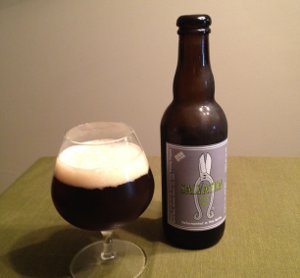
Russian River Salvation – Pours a dark brown color with amber highlights and a couple fingers of light tan head. Smells of bready, spicy Belgian yeast, with perhaps a hint of fruitiness apparent. Taste is sweet, lots of spice from the yeast, a little bit of dark fruit, perhaps even some rich dark chocolate (it doesn’t quite have a roasty note, but some sort of dark malts seem involved here). Mouthfeel is highly carbonated, medium bodied, and surprisingly dry. The alcohol is very well hidden, perhaps because of that dryness. It’s something to savor, but it’s also quite easy to drink for such a big beer. Overall, this is an excellent, well balanced Belgian style brew, exactly what I’ve come to expect from Russian River. A-
Beer Nerd Details: 9% ABV bottled (375 ml caged and corked). Drank out of a snifter on 7/14/12.
As usual, stellar stuff from Russian River. At this point, I’ve had most of their beers that have been made available in this area. I think I have a line on something new and interesting from them though, so stay tuned.
